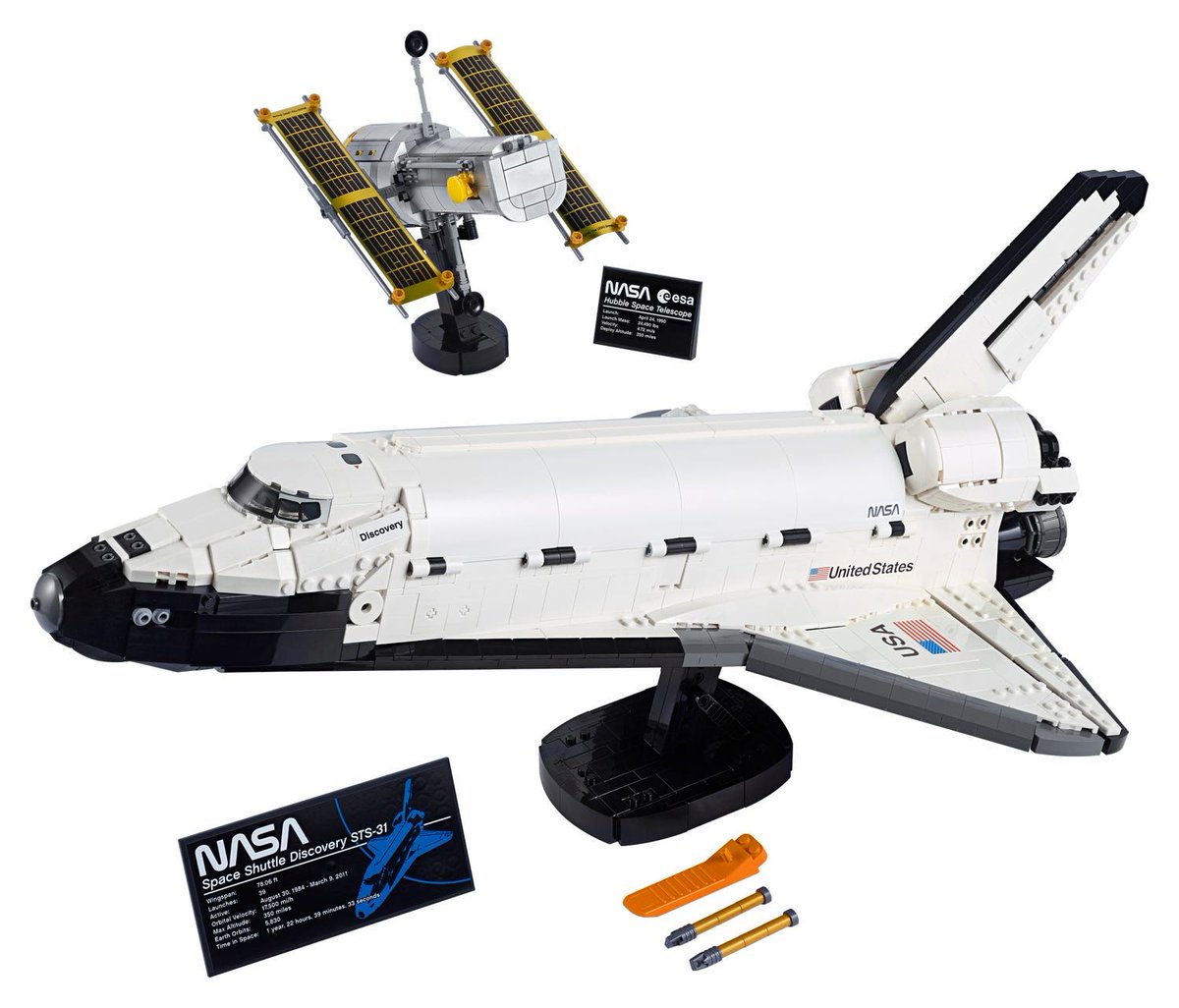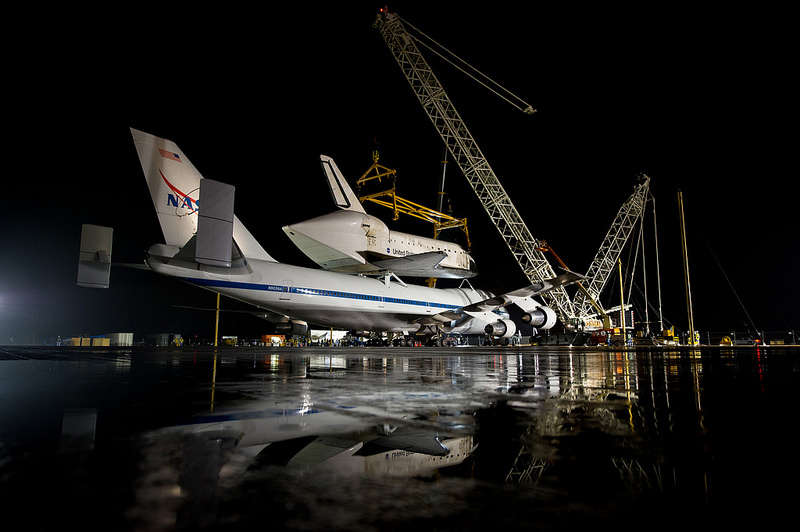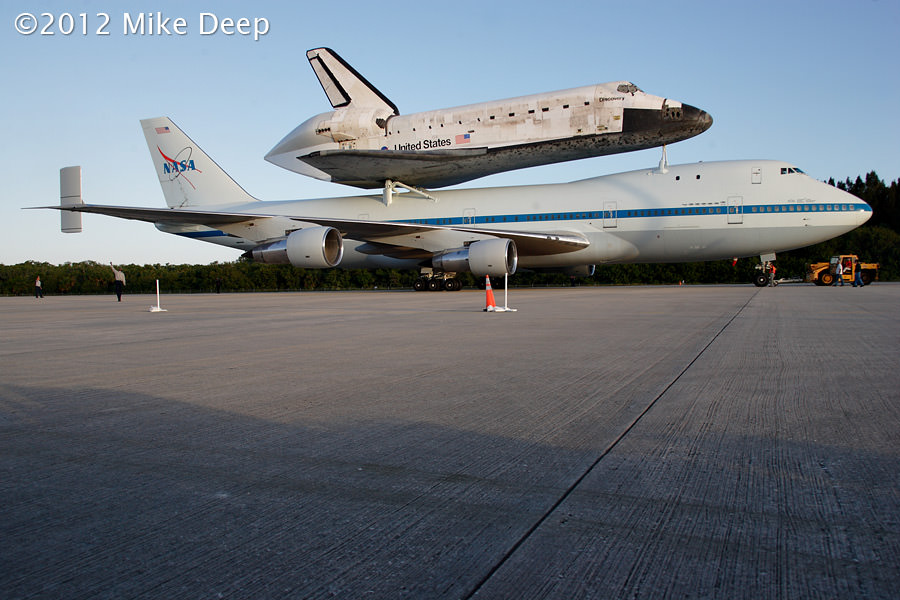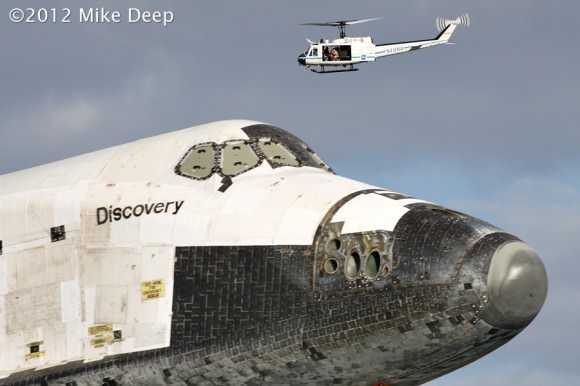When I saw the opportunity to write about a new Lego set featuring the Space Shuttle Discovery and Hubble, I immediately went to my 7 year old son, who is obsessed with Legos, and asked him if he thought I should write about it. He immediately agreed, so now I have the pleasure of introducing UT’s audience to one of Lego’s newest sets – #10283 – NASA Space Shuttle Discovery.
Continue reading “LEGO Announces the Space Shuttle Discovery and Hubble Edition”Next Cygnus Cargo Ship Christened the SS John Glenn to Honor First American in Orbit
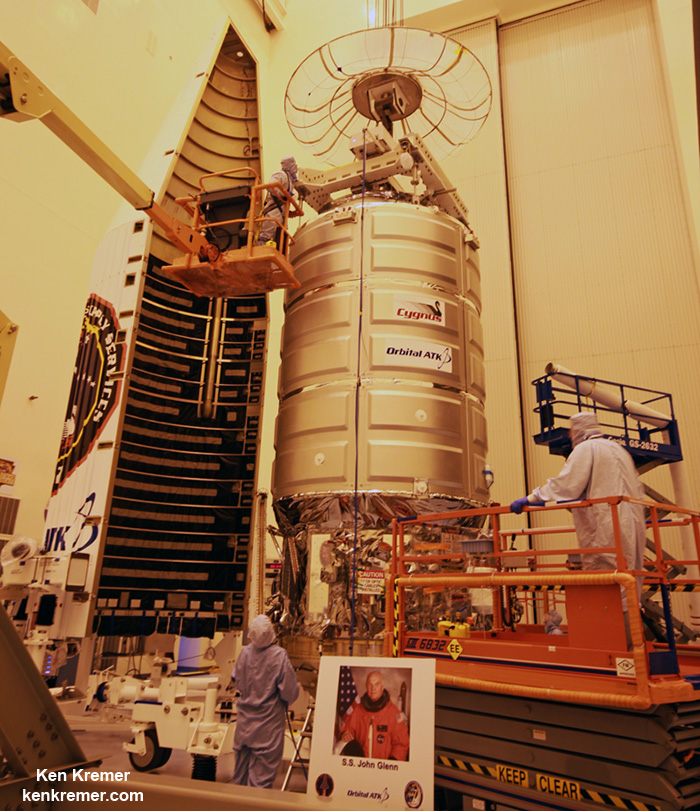

KENNEDY SPACE CENTER, FL – The next Cygnus cargo ship launching to the International Space Station (ISS) has been christened the ‘S.S. John Glenn’ to honor legendary NASA astronaut John Glenn – the first American to orbit the Earth back in February 1962.
John Glenn was selected as one of NASA’s original seven Mercury astronauts chosen at the dawn of the space age in 1959. He recently passed away on December 8, 2016 at age 95.
The naming announcement was made by spacecraft builder Orbital ATK during a ceremony with the ‘S.S. John Glenn’, held inside the Kennedy Space Center (KSC) clean room facility where the cargo freighter is in the final stages of flight processing – and attended by media including Universe Today on Thursday, March 9.
“It is my humble duty and our great honor to name this spacecraft the S.S. John Glenn,” said Frank DeMauro, vice president and general manager of Orbital ATK’s Advanced Programs division, during the clean room ceremony in the inside the Payload Hazardous Servicing Facility high bay at NASA’s Kennedy Space Center in Florida.
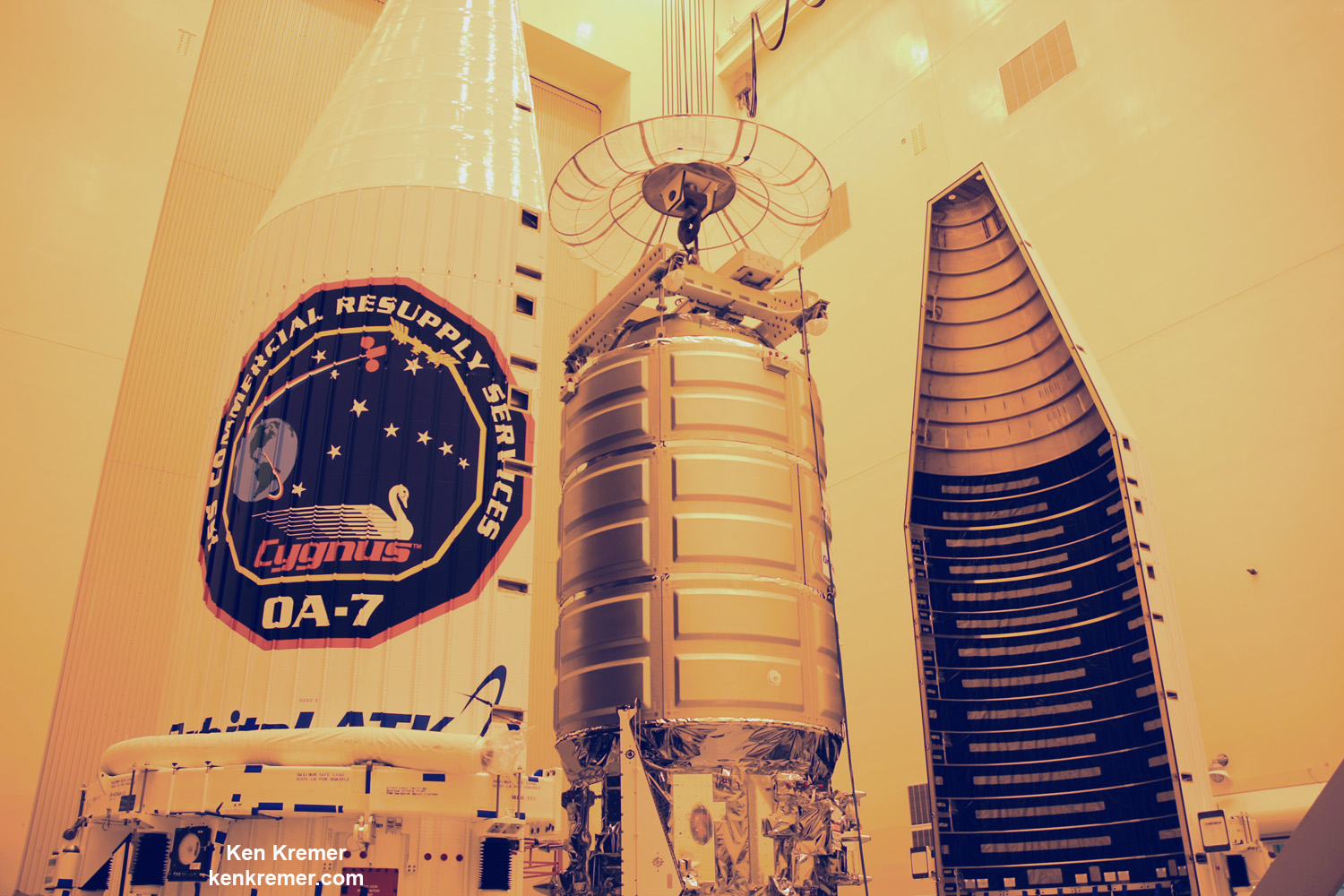
The S.S. John Glenn is scheduled to liftoff as the Orbital ATK Cygnus OA-7 spacecraft for NASA on a United Launch Alliance (ULA) Atlas V rocket launch no earlier than March 21 from Space launch Complex-41 (SLC-41) on Cape Canaveral Air Force Station, Florida.
The space station resupply mission dubbed Cygnus OA-7 is dedicated to Glenn and his landmark achievement as the first American to orbit the Earth on Feb. 20, 1962 and his life promoting science, human spaceflight and education.
“John Glenn was probably responsible for more students studying math and science and being interested in space than anyone,” said former astronaut Brian Duffy, Orbital ATK’s vice president of Exploration Systems, during the clean room ceremony on March 9.
“When he flew into space in 1962, there was not a child then who didn’t know his name. He’s the one that opened up space for all of us.”
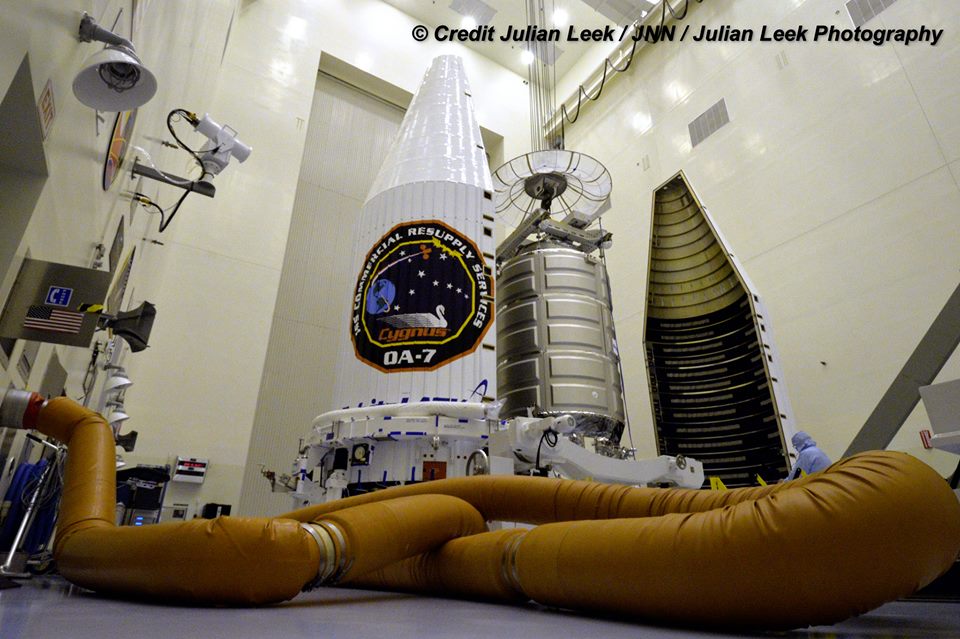
Glenn’s 3 orbit mission played a pivotal role in the space race with the Soviet Union at the height of the Cold War era.
“He has paved the way for so many people to follow in his footsteps,” said DeMauro.
All of Orbital ATK’s Cygnus freighters have been named after deceased American astronauts.
Glenn is probably America’s most famous astronaut in addition to Neil Armstrong, the first man to walk on the moon during Apollo 11 in 1969.
John Glenn went on to become a distinguished U.S. Senator from his home state of Ohio on 1974. He served for 24 years during 4 terms.
He later flew a second mission to space aboard the Space Shuttle Discovery in 1998 as part of the STS-95 crew at age 77. Glenn remains the oldest person ever to fly in space.
“Glenn paved the way for America’s space program, from moon missions, to the space shuttle and the International Space Station. His commitment to America’s human space flight program and his distinguished military and political career make him an ideal honoree for the OA-7 mission,” Orbital ATK said in a statement.

“The OA-7 mission is using the Enhanced Cygnus Pressurized Cargo Module (PCM) to deliver cargo to the International Space Station,” said DeMauro.
Cygnus will carry 7,700 pounds (3500 kg) of cargo to the station with a total volumetric capacity of 27 cubic meters.
“All these teams have worked extremely hard to get this mission to this point and we are looking forward to a great launch.”
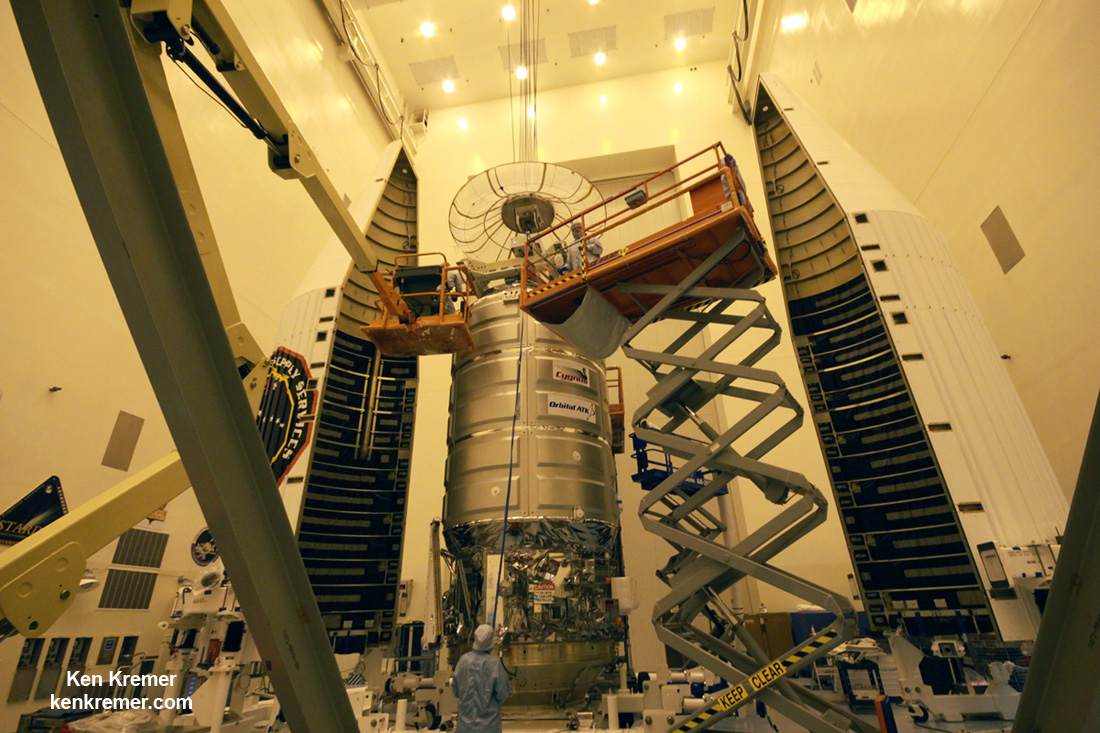
This is the third Cygnus to launch on an Atlas V rocket from the Cape. The last one launched a year ago on March 24, 2016 during the OA-6 mission. The first one launched in December 2015 during the OA-4 mission.
“We’re building the bridge to history with these missions,” said Vernon Thorp, ULA’s program manager for Commercial Missions.
“Every mission is fantastic and every mission is unique. At the end of the day every one of these missions is critical.”
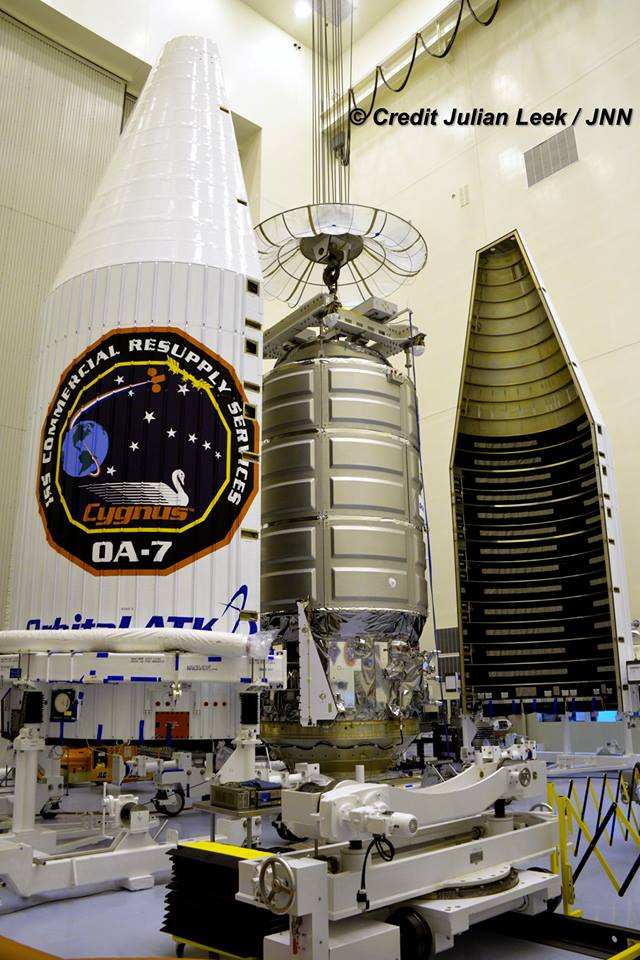
The other Cygnus spacecraft have launched on the Orbital ATK commercial Antares rocket from NASA Wallops Flight Facility on Virginia’s eastern shore.

Overall this is Orbital ATK’s seventh commercial resupply services mission (CRS) to the space station under contract to NASA.
OA-7 also counts as NASA’s second supply mission of the year to the station following last month’s launch of the SpaceX Dragon CRS-10 capsule on Feb. 19 and which is currently berthed to the station at a Earth facing port on the Harmony module.
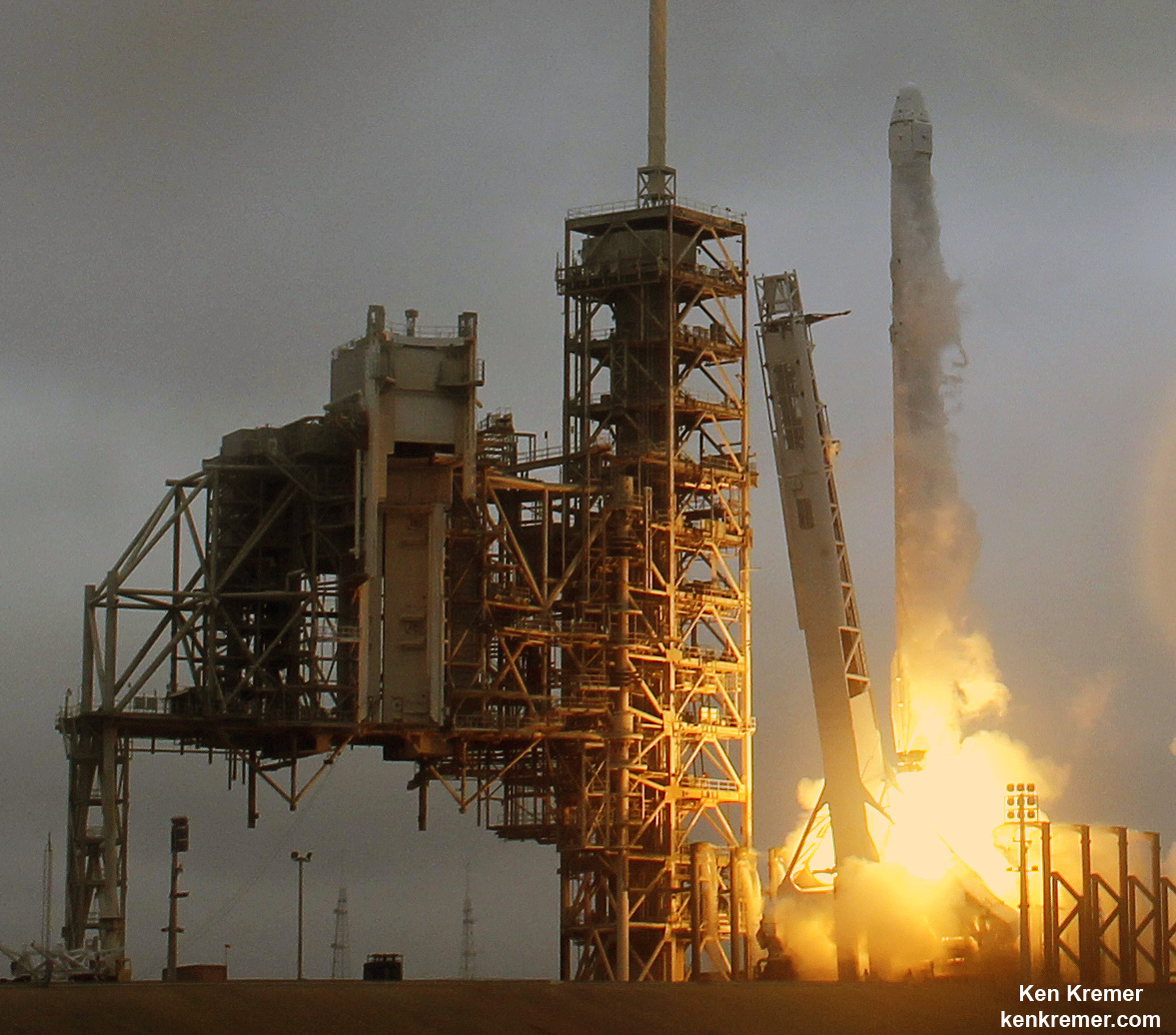
The Cygnus OA-8 mission will launch again from NASA Wallops in the summer of 2017, DeMauro told me.
Stay tuned here for Ken’s continuing Earth and Planetary science and human spaceflight news.
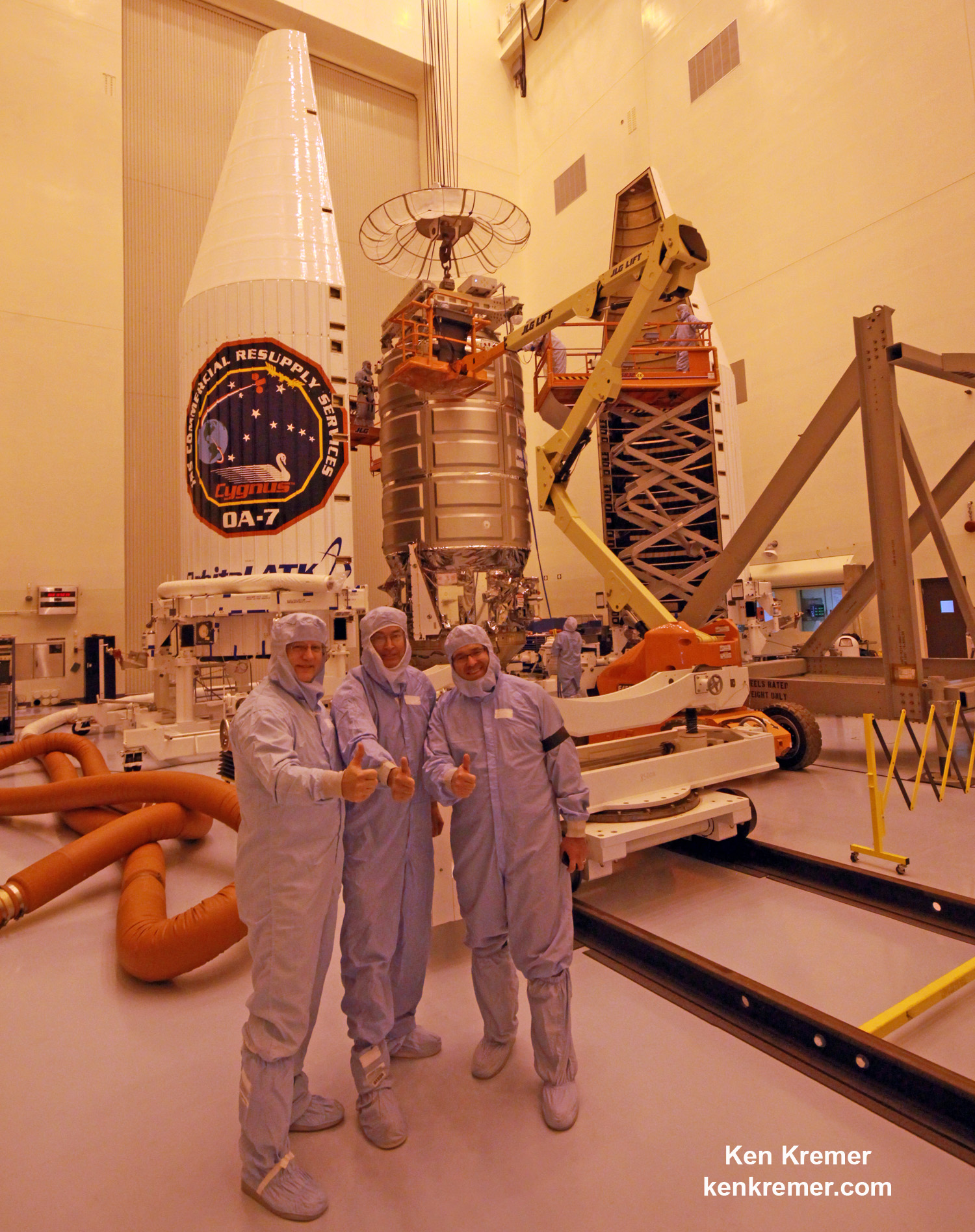
………….
Learn more about SpaceX EchoStar 23 and CRS-10 launch to ISS, ULA SBIRS GEO 3 launch, EchoStar launch GOES-R launch, Heroes and Legends at KSCVC, OSIRIS-REx, InSight Mars lander, ULA, SpaceX and Orbital ATK missions, Juno at Jupiter, SpaceX AMOS-6, ISS, ULA Atlas and Delta rockets, Orbital ATK Cygnus, Boeing, Space Taxis, Mars rovers, Orion, SLS, Antares, NASA missions and more at Ken’s upcoming outreach events at Kennedy Space Center Quality Inn, Titusville, FL:
Mar 13-15: “SpaceX EchoStar 23, CRS-10 launch to ISS, ULA Atlas SBIRS GEO 3 launch, EchoStar 19 comsat launch, GOES-R weather satellite launch, OSIRIS-Rex, SpaceX and Orbital ATK missions to the ISS, Juno at Jupiter, ULA Delta 4 Heavy spy satellite, SLS, Orion, Commercial crew, Curiosity explores Mars, Pluto and more,” Kennedy Space Center Quality Inn, Titusville, FL, evenings
Enterprise Strapped atop 747 and Delights Dulles Airport Flyers
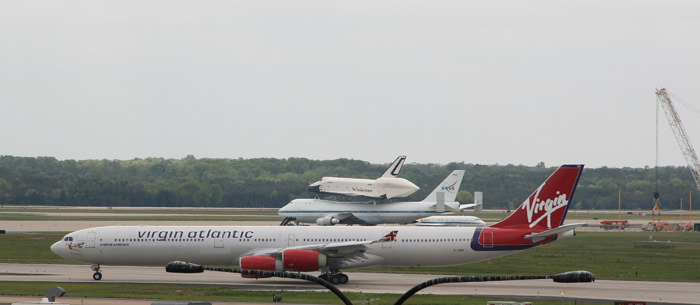
[/caption]
Space Shuttle Enterprise has been strapped atop the 747 Shuttle Carrier Aircraft (SCA) that will soon fly NASA’s path finding orbiter from Dulles Airport to her new and final home in the Big Apple – and to the delight of Dulles Airport flyers and visitors she’s all primed at a spot offering a fantastic public glimpse of the historic last flight ever of NASA’s 1st space shuttle vehicle.
Have you ever dreamed of seeing the magnificent sight of a NASA space shuttle on top of a 747 Jumbo Jet up close with your own eyes ?
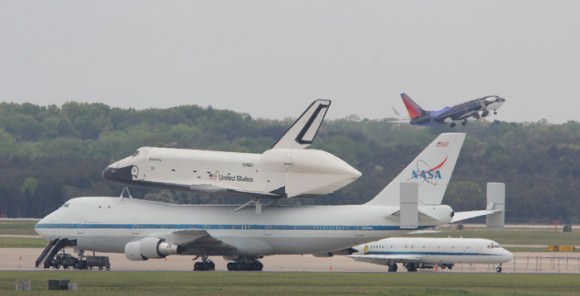
Space Shuttle Enterprise mounted atop NASA 747 Carrier Jet at Dulles Airport - Commercial Jets Fly By. Credit: Ken Kremer
Well, right now anyone can get that superb glance of the mated duo quite simply from one of the upper level parking decks at Dulles Airport. And you don’t need a press pass, plane ticket, intrusive TSA pat down or a secret service security clearance.
And because of inclement weather, you will have a few extras days to catch history in the making of a sight that will soon evaporate into the ether of time. Only a Stak Trek era holodeck with bring it back.
After setting up to photograph Enterprise from the parking deck, I was joined within minutes by more than a dozen enthusiastic folks and kids !
NASA has postponed the planned Monday, April 23, departure of Enterprise from Dulles for New York City and touchdown at JFK Airport because of expected bad weather at both ends of the Washington to New York itinerary.
Universe Today has been told that NASA is now aiming for a Wednesday departure, weather permitting.
See Enterprise and Discovery nose to nose, here
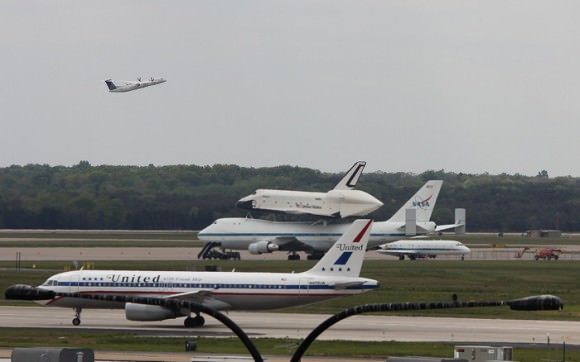
Right now and continuing over the next few days, supremely lucky passengers seated aboard arriving and departing jets at Dulles are enjoying a truly stupendous bird’s-eye view of the winged NASA orbiter that most aerospace fans can only dream of. Just be sure to sit on the correct side on the plane.
Check out the photos herein taken from the Dulles Daily Parking Garages taken by myself and fellow space photographer Brent Houston with invaluable assistance from space photographer Walter Scriptunis II.
In a first-of-its-kind “Shuttle Shuffle”, shuttles Enterprise and Discovery swapped spots at the Smithsonian’s Steven F. Udvar-Hazy Center, Thursday, April 19, 2012, in Chantilly, Va.
Enterprise was first towed out of the Smithsonian’s museum display hanger in the early morning. The pair of shuttles then met for a historic nose to nose rendezvous – lasting just 4 hours. Finally, Space Shuttle Discovery was hauled inside to the prestigious spot formerly occupied by Enterprise.
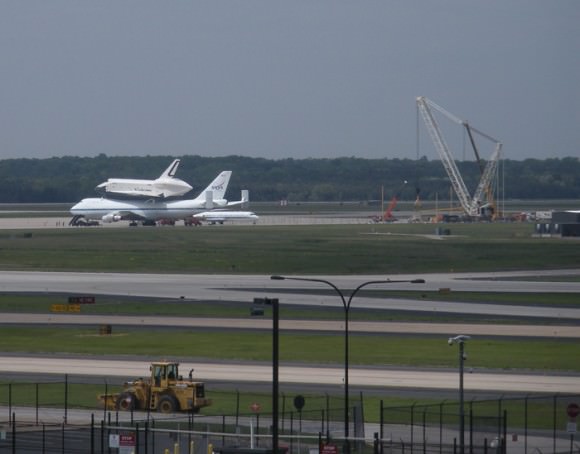
Since 2003, Enterprise has been the centerpiece at the Smithsonian’s National Air & Space Museum Annex in Virginia.
Enterprise is named in honor of the fictional Starship of galactic exploration from the immensly popular “Star Trek” science fiction television series of the 1960’s.
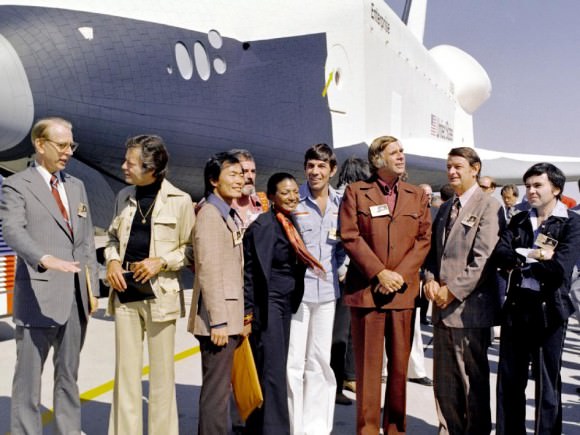
In 1976, NASA's space shuttle Enterprise rolled out of the Palmdale manufacturing facilities and was greeted by NASA officials and cast members from the 'Star Trek' television series. From left to right they are: NASA Administrator Dr. James D. Fletcher; DeForest Kelley, who portrayed Dr. "Bones" McCoy on the series; George Takei (Mr. Sulu); James Doohan (Chief Engineer Montgomery "Scotty" Scott); Nichelle Nichols (Lt. Uhura); Leonard Nimoy (Mr. Spock); series creator Gene Rodenberry; an unnamed NASA official; and, Walter Koenig (Ensign Pavel Chekov). Credit: NASA
After landing at JFK Airport, Enterprise will be moved to a barge for a seagoing journey to her permanent new home at the Intrepid Sea, Air, and Space Museum in Manhattan.
Read more about Enterprise in Ken’s earlier story here and watch for more articles
Discovery & Enterprise – Historic Nose to Nose Shuttle Image
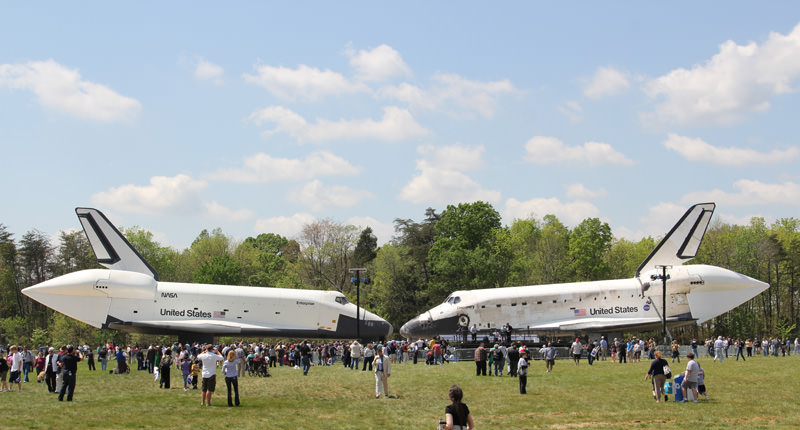
[/caption]
Two NASA Space Shuttles – Enterprise and Discovery – sit nose to nose in a historic, once in a lifetime meet up at the Smithsonian’s National Air & Space Museum Annex in Virginia on April 19, 2012 for the official transfer of ownership from NASA to the Smithsonian.
Space Shuttle Discovery was the first orbiter retired from NASA’s fleet of three space flying shuttles. It completed 39 missions, spent 365 days in space, orbited the Earth 5,830 times, and traveled 148,221,675 miles.
Discovery was ferried to the museum on April 17 after arriving atop a 747 Jumbo jet and a series of triumphant fly arounds of the US Capitol region.
Discovery takes the place of Enterprise. NASA says Discovery will commemorate past achievements in space and serve to educate and inspire future generations of explorers at the Smithsonian center.
Discovery is now open for public viewing.
Enterprise is being flown to New York City on April 23.
Photo gallery to follow.
Discovery Enters Eternal Smithsonian Home as Historic Relic
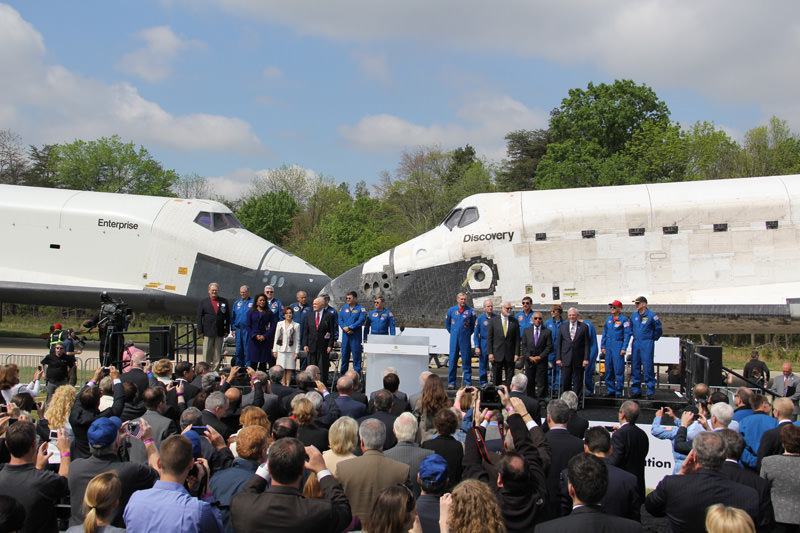
[/caption]
Space Shuttle Discovery, the longest serving and most flown spaceship in human history, entered her eternal home today, Thursday, April 19, at the Smithsonian’s National Air & Space Museum Annex in Virginia.
Discovery thereby assumed her new status as a museum relic and monument to the promise and glorious dreams of space exploration, inspiring future generations of explorers to reach far beyond their grasp and accomplish the unthinkable. That’s what space and science are all about.
The space shuttle program and all three of NASA’s winged spaceships were forcibly retired by politicians at the conclusion of the final shuttle mission, STS-135, in July 2011 which left America with no means to launch our own astronauts into space and to the International Space Station.
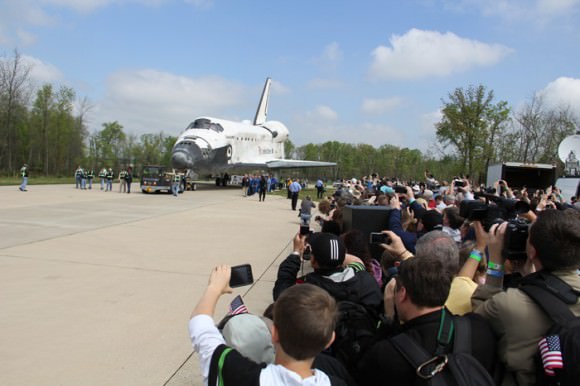
Discovery officially became the property of the Smithsonian Museum when NASA Administrator Charles Bolden signed the title of ownership over from NASA to the world renowned museum at a public ceremony held today at the Smithsonian’s Steven F. Udvar-Hazy Center in Chantilly, Virginia.
“Today, while we look back at Discovery’s amazing legacy, I also want to look forward to what she and the shuttle fleet helped to make possible,” said NASA Administrator Charles Bolden. “As NASA transfers the shuttle orbiters to museums across the country, we are embarked on an exciting new space exploration journey. Relying on American ingenuity and know-how, NASA is partnering with private industry to provide crew and cargo transportation to the International Space Station, while developing the most powerful rocket ever built to take the nation farther than ever before into the solar system.”
National Air and Space Museum Director, General John “Jack” Dailey said, “Discovery has distinguished itself as the champion of America’s shuttle fleet. In its new home, it will shine as an American icon, educating and inspiring people of all ages for generations to come. The Museum is committed to teaching and inspiring youngsters, so that they will climb the ladder of academic success and choose professions that will help America be competitive and successful in the world of tomorrow.”
Bolden and Dailey signed the transfer documents in front of the huge crowd who came to celebrate Discovery’s arrival.
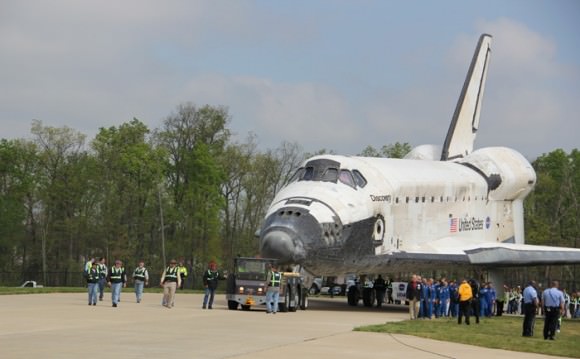
The official handover ceremony was witnessed by a prestigious gathering of some three dozen astronauts including more than a dozen men and women who served as Commanders of Space Shuttle Discovery and Senator and Astronaut John Glenn, the first American to orbit the Earth 50 years ago in 1962.
Glenn flew to space for the 2nd time aboard Discovery as a payload specialist in 1998 at the age of 77. He is the oldest person to fly in space.
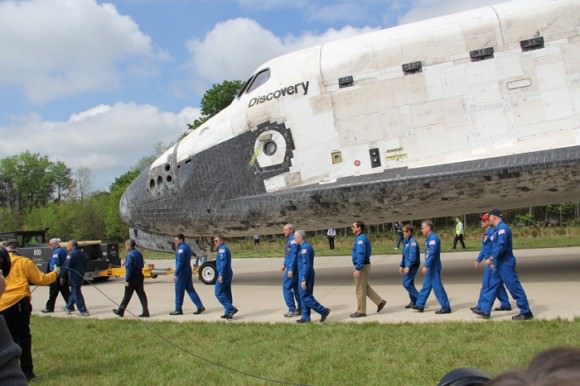
And the general public showed their enthusiastic support for NASA and space exploration by attending in the thousands and staying all day for the dozens of activity stations, presentations and displays organized by NASA and the Smithsonian and its donors.
Glenn made clear his disagreement with the end of NASA’s shuttle program.
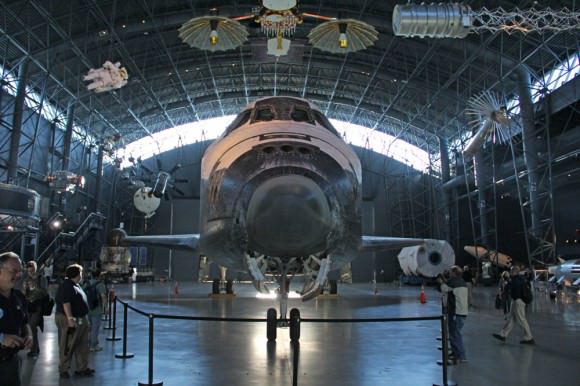
To make way for Discovery, Space Shuttle Enterprise was first towed out a huge rear door of the museum early this morning. Discovery and Enterprise then met nose to nose as the dramatic backdrop for the official welcoming ceremony.
Late this afternoon, Discovery was towed to her final resting place into the museum to the exact spot formerly held by Enterprise, which had been on display at the Virginia facility since 2003.
Altogether, Discovery flew 39 missions and spent a full year (365 days) in space, orbited Earth 5,830 times and traveled 148,221,675 miles during a space flight career spanning 27 years.
Discovery flew its maiden voyage on Aug. 30, 1984 and blasted off on her final voyage on Feb. 24, 2011. The STS-133 mission was the final flight for the illustrious orbiter which landed at the Kennedy Space Center on March 9, 2012.
Discovery deployed the iconic Hubble Space Telescope to orbit, one of the premier science instruments built by humankind. Discovery delivered many other science payloads to orbit and also to explore the solar system, including the Ulysses solar probe.
The winged spaceship was NASA’s fleet leading orbiter and played a significant role in building the International Space Station and visiting the Russian Mir Space Station.
Demating Discovery for Smithsonian Welcome
[/caption]
Following Discovery’s triumphant final flight from her Florida Spaceport home and victory lap tour above the skies of Washington D.C. – piggybacked atop a 747 Jumbo Jet – she landed at her permanent new home at the Smithsonian’s Virginia annex on April 17 and the dynamic duo taxied off the Dulles Airport runway to a temporary parking spot off to the side.
Tonight, Discovery is being demated from the Shuttle Carrier Aircraft, designated NASA 905.
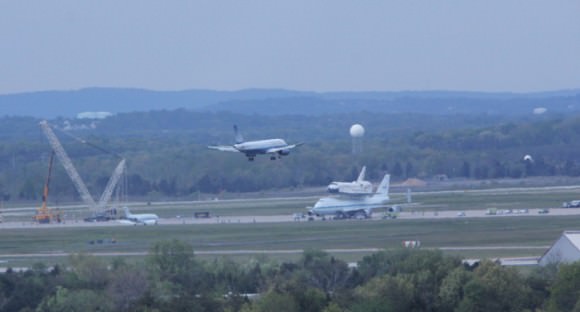
Credit: Ken Kremer
As Discovery awaited demating off to the side of a Dulles runway, numerous jets have descended right past – with some lucky passengers catching a birds eye glimpse of that remarkable sight of Discovery sitting atop a 747 jet.
A pair of rented monstrous cranes at front and back will hoist Discovery – weighing around 166,000 pounds – off the jets rear and three unbolted attach points. The 747 will then be backed out, Discovery’s landing gear and wheels will be extended and the cranes will gently lower NASA’s most experienced shuttle orbiter to the ground in a delicate and rarely performed ballet.
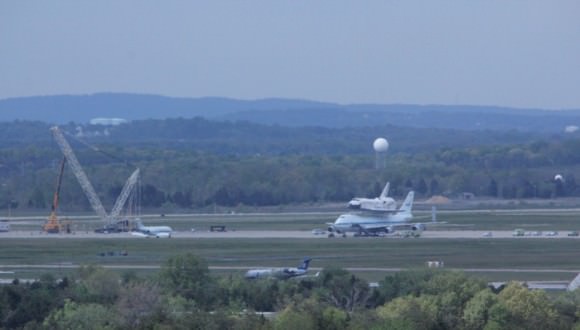
Credit: Ken Kremer
A small crew of the few remaining shuttle workers has meticulously prepared the Dulles airport site over the past few weeks, drilled stabilizing holes into the tarmac and assembled the Demag cranes which stem from a company in New Jersey and were specially flown in from a Canadian worksite.
NASA’s fleet leading orbiter will then be towed a short distance to her permanent new home at the Smithsonian National Air and Space Museum’s Steven F. Udvar-Hazy Center in Chantilly, Virginia.
The public is invited to attend the Smithsonian’s “Welcome Discovery Day Celebration” on Thursday, April 19 to witness the final leg of Discovery’s trip, being towed inside. The museum doors open at 8 a.m. sharp.
Those who attend the Smithsonian’s April 19 festivities will be treated to a once in a lifetime view of a shuttle shuffle and two space shuttles – Discovery and Enterprise -poised nose to nose for about 4 hours.
Space Shuttle Enterprise is being towed out of the Udvar-Hazy Center to make way for parking Discovery in her new home at the exact same spot now occupied by the prototype orbiter Enterprise since 2003.
Over the weekend, Enterprise will be hoisted atop the modified 747 and fly to her new home in New York City on April 23 – weather permitting.
Enterprise will land at JFK Airport and eventually be transported by barge to the Intrepid Sea, Air, and Space Museum in Manhattan.
See you at the Smithsonian and send Ken your Discovery photos to post at Universe Today.
Discovery Does Dulles & DC
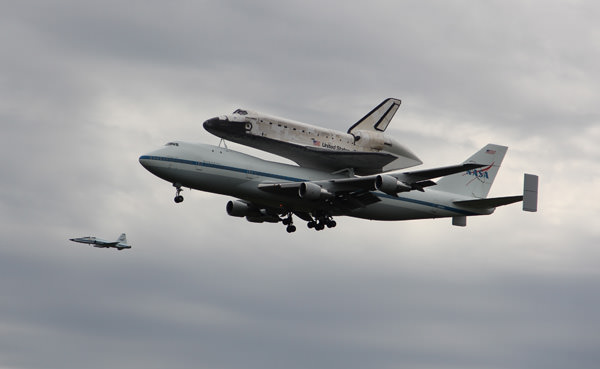
[/caption]
Space Shuttle Discovery took off from Florida on her final mission today atop a modified Boeing 747 Jumbo Jet, headed north and ultimately did a well earned victory lap over the US capitol before closing out her flying career and landing at nearby Dulles Airport and her permanent new museum home at the Smithsonian National Air and Space Museum’s Steven F. Udvar-Hazy Center in Chantilly, Virginia – where untold thousands and thousands gathered to witness together.
Throngs of onlookers lined the Florida Space Coast at the Kennedy Space Center to bid Discovery a tearful farewell from her home of nearly 30 highly productive years as she took off at the appointed hour of 7.a.m. EDT
Discovery flew 39 missions and delivered the incomparable and iconic Hubble Space Telescope into orbit.
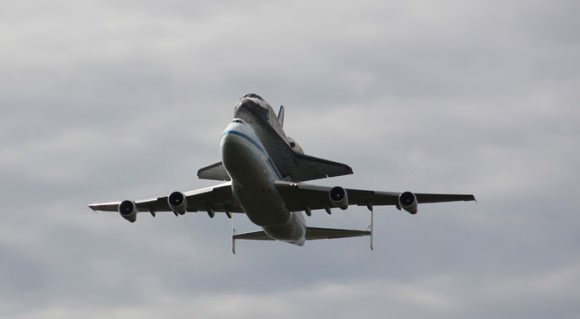
Many here and there were overwhelmingly sad that NASA’s shuttle program was prematurely cut short – barely a third of the way into the design lifetime and at the peak of performance for lack of political willpower and a small amount of federal funding, ceding US Leadership in Space.

Barely two hours later – and ahead of schedule – NASA’s Fleet leading orbiter arrived in the skies over Washington, DC greeted by cheering crowds numbering in the tens to hundreds of thousands who had gathered all across the Capitol region to celebrate the stunning sight of a Space Shuttle Orbiter flying piggyback on a Jumbo Jet just a few hundred feet overhead.
The flight crew put on a dazzling and extended display of impressive flying ability buzzing over historic sites like the Washington Monument and the US Capitol, the National Harbor and everyday abodes. They circled around and around far more than advertised – to everyone’s delight.
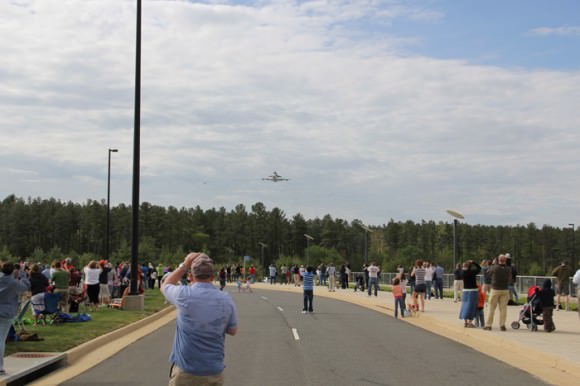
I was thrilled to watch the glorious sky show from the grounds of the Smithsonian’s Undar Hazy Center along with thousands of enthusiastic and cheering gawkers. Luckily I arrived early. Because within an hour, the parking lot was completely full and well beyond capacity several hours before the Museum’s official opening time.
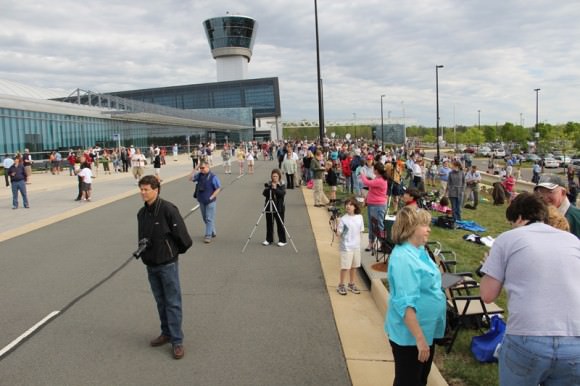
We witnessed four ultra close flyovers, including one directly overhead. Everyone was whooping and hollering. It was like a fun family fair, kids playing and jumping all over the place. And it sure seemed like some parents kept their kids home from school a few hours to witness one in a lifetime history
Finally the wheels and landing gear of the NASA 905 Shuttle Carrier Aircraft (SCA) were extended for final touchdown shortly after 11 a.m. – and a boisterous round of spontaneous applause erupted from the masses.
What a day of conflicting emotions – happy and sad, and absolutely not to be missed.
Discovery will next be hoisted off the SCA on Wednesday and then towed into her new abode on Thursday, April 19.
Stay tuned to Universe Today for continuing on-site coverage
Send Ken your flyover photos to post here at Universe Today.
Shuttle Discovery Flies Over Washington D.C. to New Home
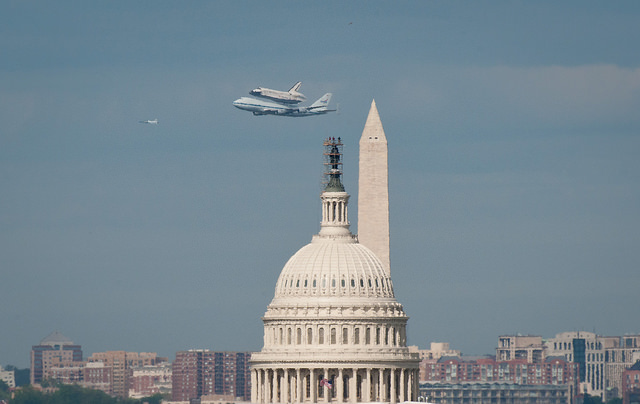
[/caption]
Space Shuttle Discovery, atop its Shuttle Carrier Aircraft, NASA 905, flew over the US national capital region on April 17, 2012 on the final leg of its ferry flight from NASA’s Kennedy Space Center in Florida to Dulles International Airport in Virginia, on the way to its final home at the National And & Space Museum’s Steven F. Udvar-Hazy Center. The image above shows the duo flying near the U.S. Capitol and the video below shows views of Discovery from various vantage points in Washington D.C.
Discovery, the first orbiter retired from NASA’s shuttle fleet, completed 39 missions, spent 365 days in space, orbited the Earth 5,830 times, and traveled 238539663.3 km (148,221,675 miles). Discovery new mission will be to “commemorate past achievements in space and to educate and inspire future generations of explorers,” NASA says.
You can see more images at NASA’s Flickr page.
Here’s a video taken by Joy Hargraves who went to the Udvar-Hazy Center today to watch the Shuttle Discovery come in to her final resting place:
Discovery Poised for Final Takeoff on April 17
[/caption]
Space Shuttle Discovery is poised for her final takeoff, bolted firmly on top of the Boeing 747 Shuttle Carrier Aircraft (SCA) at the Kennedy Space Center in Florida.
This morning (Tuesday, April 16) the mated pair were backed out of the Mate/Demate Device at the Shuttle Landing Facility.
See more images from Universe Today photographer Mike Deep at KSC, below:
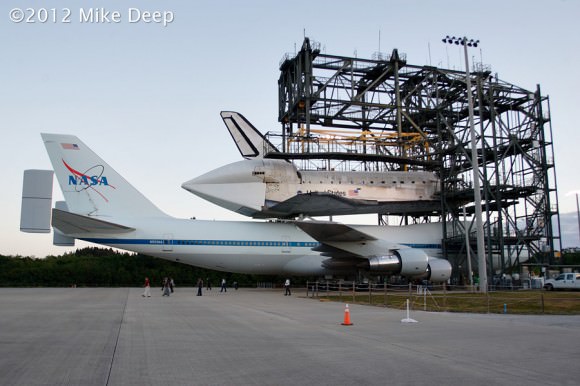
Kennedy Space Center has been Discovery’s home for three decades and the countdown clock is ticking down relentlessly to a day many hoped would not come foe many more years. In just a few hours she will depart for the last time and never return.
The SCA jet, designated NASA 905, will fire her engines at the runway and take flight shortly after sunrise at 7 a.m. on Tuesday (April 17), fly around the Space Coast facilities and beaches, putting on a great show for the throngs expected to wish her a fond farewell. The best view is from the beaches around Port Canaveral and the lucky visitors at the landing strip itself.
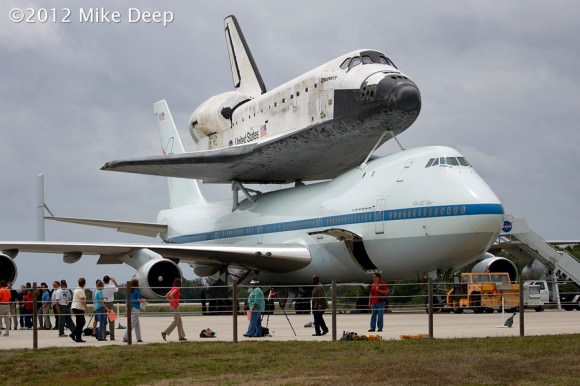
Then, NASA 905 will head north and ferry Discovery to her permanent new home and museum display at the Smithsonian National Air and Space Museum’s Steven F. Udvar-Hazy Center in Chantilly, Virginia.
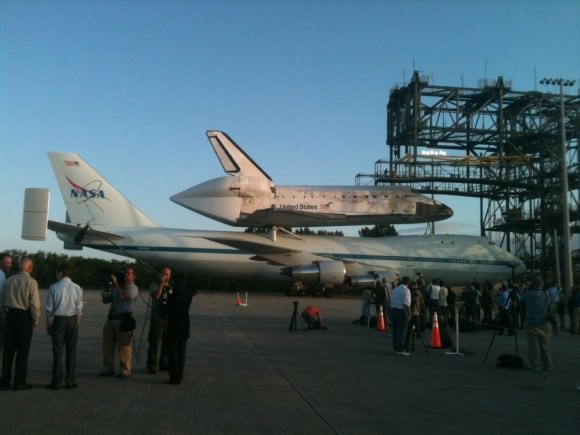
Discovery is expected to arrive in the Washington, D.C. area around 10 to 11 a.m. with spectacular views around the National Mall area as well as National and Dulles Airports and the Udvar-Hazy Center, at only about 1500 feet altitude – weather permitting.
NASA TV will air live broadcasts of Discovery’s flight
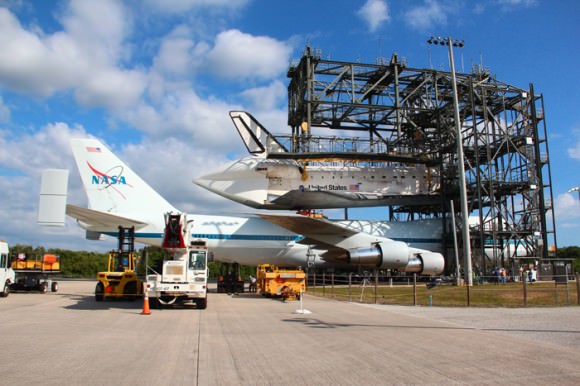
If you spot the shuttle along the way and around the DC area, send Ken your photos to post here at Universe Today.
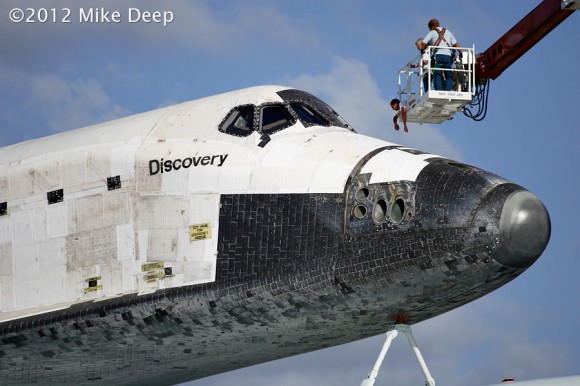
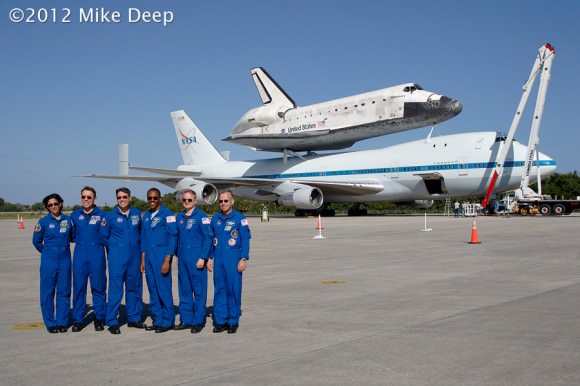
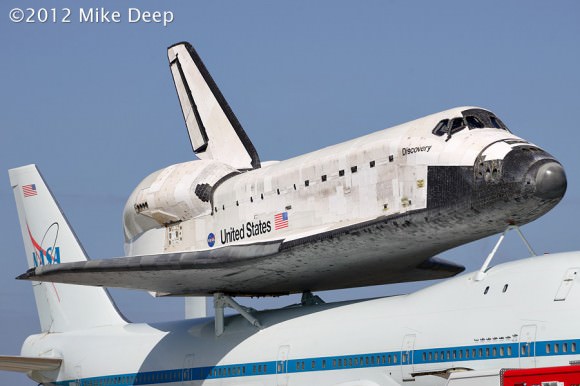
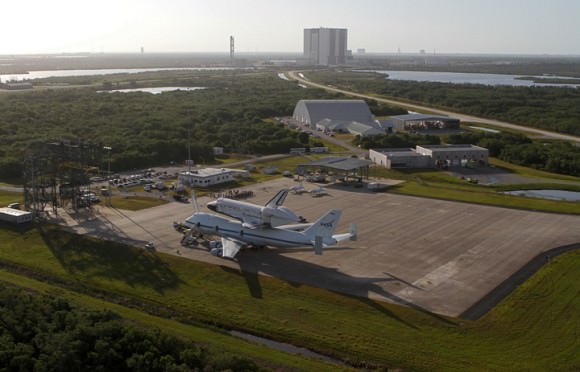
Shuttle Discovery Mated to 747 Carrier for her Final Flight to Smithsonian Home
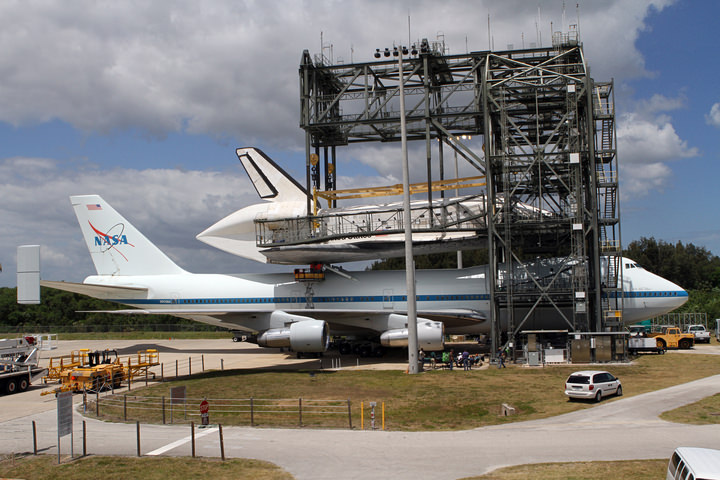
[/caption]
Following a busy weekend of work, Space Shuttle Discovery is now attached piggyback style to the Shuttle Carrier Aircraft (SCA) at NASA’s Kennedy Space Center and all set for the final flight to her ultimate resting place at the Smithsonian National Air and Space Museum’s Steven F. Udvar-Hazy Center in Virginia on Tuesday April 17. There she will reside on permanent display for the public just a short distance outside Washington D.C.
In the predawn hours on Saturday (April 14), Discovery was towed for the last time to the Mate- Demate Device (MDD) at the Shuttle Landing Facility and NASA’s specially outfitted Boeing 747 Jumbo Jet awaiting her in Florida. But howling winds in the subsequent hours delayed the hoist and mate on the back of the huge carrier plane.
Today (Sunday, April 15), the winds calmed and technicians raised Discovery and mechanically bolted her atop the SCA jet, designated NASA 905.
“It may have taken two days because of weather, but Discovery was attached to the Shuttle Carrier Aircraft today (April 15),” NASA KSC spokesman Allard Beutel told Universe Today after the mating operation was finished.
“And we’re on track to give Discovery a proper send off to its new home on Tuesday morning.”
NASA 905 will carry out all the remaining flights to ferry Space Shuttles Discovery, Enterprise and Endeavour to their permanent museum sites in Virginia, New York and California. The last remaining shuttle – Atlantis – will be towed later this year to her new home a few miles down the road at the Kennedy Space Center Visitor Complex.
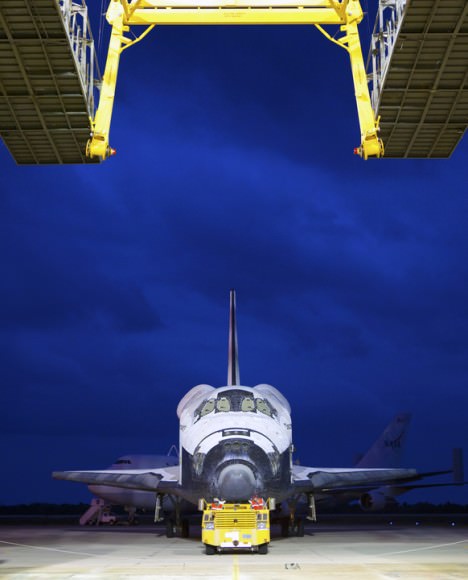
The initial mating of Discovery and the SCA in the mate/demate device was completed at about 11:15 a.m. EDT. The shuttle was finally secured to the carrier jet a few hours later on Sunday afternoon and will be backed out of the MDD on Monday, April 16.
NASA 905 will lift off at about 7 a.m. to ferry Discovery to the Washington Dulles International Airport in Virginia on April 17 with a planned arrival between 10 to 11 a.m. depending on weather.
If you spot the shuttle along the way, send Ken your photos to post here at Universe Today.
The SCA will fly over multiple locations from Washington, DC to the Udvar-Hazy Center as low as 1500 feet for the public to enjoy before finally landing at Dulles Airport.
Ken hopes to be on hand at the Udvar-Hazy Center for Universe Today
Discovery’s final departure from the Kennedy Space Center marks a bittersweet time for all who worked on the shuttle program as well as fans and advocates of space exploration across the globe.

